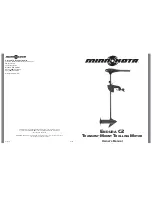
1. Introduction
ÛZIATECH
13
486SX/DX4 Processors
The ZT 8907 supports the 486SX-25, 486SX-33, and 486DX4-100 processors. The
processors differ in operating speeds and hardware support of floating point operations,
as shown in the following table.
Processor
Operating Speed
Supports Floating
Point Operations
486SX-25
25 MHz
No
486SX-33
33 MHz
No
486DX4-100
33 MHz external, 100 MHz internal
Yes
Note:
The 486DX4-100 is a 3.3 V processor. This reduces the energy needed by the
CPU as well as the waste heat generated during operation. The ZT 8907 is equipped
with a highly efficient 3.3 V power source for the CPU and the DRAM memory.
Memory and I/O Addressing
The ZT 8907 includes two 72-pin SO-DIMM sockets that support up to 32 Mbytes of
EDO DRAM. The ZT 8907 also supports flash memory soldered directly on the board.
Memory operations up to 32 Mbytes that are not decoded by local memory devices are
directed to the STD bus. Data transfers are dynamically adjusted to support standard
architecture boards with an 8-bit or 16-bit data path.
The ZT 8907 also includes many I/O peripherals required for industrial control
applications. I/O operations not decoded by local I/O devices are directed to the
STD bus. The STD bus I/O expansion signal, IOEXP, is supported to limit the
addressing redundancy of I/O boards decoding fewer than 16 bits of address. Data
transfers are dynamically adjusted to support standard architecture boards with an 8-bit
or 16-bit data path.
PCI Bus Video
The ZT 8907 supports both STD bus and local PCI bus video adapters. For STD bus
video, Ziatech offers video boards that support VGA and flat panel displays. For local
bus video, Ziatech offers zPM adapters that plug directly onto the ZT 8907's PCI
mezzanine local bus interface connector (J13).
PCI bus video is up to 700% faster than STD bus video because the data transfers
occur at CPU speed (up to 33 MHz) and bus width (up to 32 bits). For space-
constrained applications, use of zPM adapters has the advantage of not requiring the
additional card cage slot that STD bus video boards would need. Refer to Chapter 13,
"
," for more information.














































